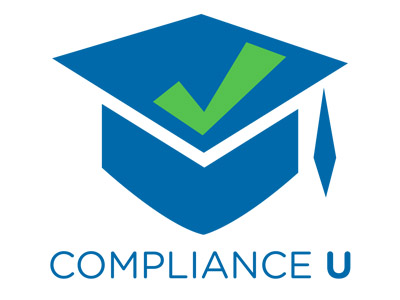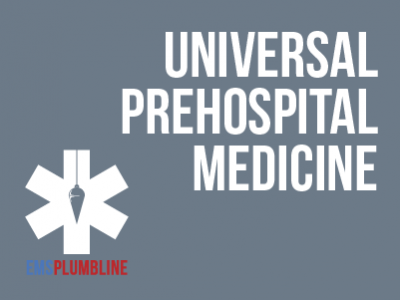 |
Cultural Diversity in School Settings |
1.00 |
This course contains definitions of diversity, equity, and inclusion (DEI) and the role DEI plays in the school setting. Embracing diversity, equity, and inclusion benefits everyone within a K-12 institution: faculty, staff, students, and families.
Learners will reflect on the different elements of their own identity and how that impacts their perception of others. This course will also discuss the role of bias in the school setting. |
 |
Project-Based Learning for Teachers |
1.75 |
This course is designed to provide educators with the knowledge, skills, and tools to implement project-based learning (PBL) in their classrooms. The advantages of using PBL along with some ways to zero in on selecting topics and projects will be discussed. This course will help you develop new knowledge about using project-based learning effectively. |
 |
Organizational Communication: Power, Politics, and Diversity |
0.75 |
Power is the ability to influence someone to do something that they would not do without encouragement. Various types of power and power strategies depend on the level of influence. The existence of different levels of power in an organization gives rise to organizational politics.
Politics can arise between individuals who differ from each another. To avoid confrontation arising from differences, it is important for people to recognize the benefits of diversity within their organization.
In this course you will learn to: identify different levels and types of power, identify strategies to manage diversity and to communicate in different cultures, and identify the steps and guidelines for empowerment. |
 |
Introduction to Assessment for Teachers |
1.25 |
This course covers basic assessment information for teachers. It will be a refresher for basic concepts generally covered in a teacher preparation program. Educators must understand the reasons for assessment and its importance in supporting appropriately designed instruction for students. This course will help you develop new knowledge and review prior knowledge regarding the impact of assessment on teaching and learning. |
 |
Collaboration with Team Members for Paraprofessionals |
1.00 |
This course covers collaboration with team members for paraprofessionals. You will learn what collaboration looks like in the school setting and what it means to use effective collaboration strategies. This course will also dive into what it means to be an effective communicator in the professional setting. |
 |
Preventing Sexual Harassment and Understanding California Law |
0.50 |
This course will teach California employees how to recognize sexual harassment, defines the rights and responsibilities of employers and employees, and provides an overview of the legal remedies available in sexual harassment lawsuits. |
 |
Infectious Diseases: Causes and Symptoms |
1.00 |
An infectious disease is an illness that is caused by organisms such as bacteria, viruses, fungi, and parasites. Many of these organisms live in or on our bodies, and are normally harmless. But under certain circumstances, they can cause disease.
Course Learning Objectives:
- Describe infectious disease, and the ways in which germs that can cause infectious disease are spread.
- Identify common symptoms of infectious diseases, and why young children are vulnerable to infectious diseases. |
 |
Sales Skills: Advanced: Developing a Winning Strategy |
0.50 |
This course will focus on examining consulting strategies and developing solutions for clients. |
 |
Part-time Jobs |
0.50 |
A part-time job is one that involves working fewer hours than a full-time job in one week. This course will teach you some of the pros and cons of working part-time jobs, as well as things to keep in mind when considering this career choice. |
 |
Indoor Air Quality |
1.00 |
This course covers indoor air quality (IAQ) and useful associated skills. You will learn the difference between sick building syndrome and building-related illness, as well as the conditions that cause these illnesses. You will also learn model IAQ policies and practices. |
 |
Hose Competency (Instructor Guide) |
1.00 |
This is the Instructor Guide for Hose Competency. This competency evaluates the ability of assigned companies to perform hose tasks including stretching, advancing, and operating fire hose streams. This competency may also be conducted as an independent drill or evolution. |
 |
Business Writing: Formal Proposals |
0.75 |
This course will cover how to create a formal proposal. You will also learn how to add visual elements to a formal proposal, and edit a proposal. |
 |
Prehospital Tracheostomy Care for the BLS Provider |
1.00 |
One of the most intimidating events for a BLS provider is the 911 call for a pediatric patient with a difficult airway. Dr. Christopher Harmon and Paramedic Kuo Downing Reese discuss the challenging topic of the emergent airway and tracheostomy management in the prehospital setting.
Final Exam: This multiple-choice exam is designed to test your knowledge of the material you just reviewed. You have two attempts to gain an 80% or higher on this exam. Please take your time and answer each question carefully. |
 |
Combating Sexual Harassment in the Workplace (NY) |
1.00 |
In recent years, the topic of sexual harassment in the workplace has been brought into the national spotlight, bringing with it renewed awareness about the serious and unacceptable nature of these actions and the severe consequences that follow.
Under state law effective October 2018, every employer in New York is required to establish a sexual harassment prevention policy which includes annual training, pursuant to Section 201-G of the Labor Law.
This course was created by CypherWorx based on the 2023 update of the training materials developed by the New York State Department of Labor and Division of Human Rights, and is designed to meet or exceed standards required by state law. |
 |
Lifting and Moving—Lesson 2 |
0.50 |
In the second session, we will discuss body mechanics and what you can do to properly train to perform in a safe manner. Final Exam: This multiple choice exam is designed to test your knowledge of the material you just reviewed. You have two attempts to gain an 80% or higher on this exam. Please take your time and answer each question carefully.
|
 |
Business Finance: Portfolio Risk |
0.75 |
This course will focus on how to use the diversification principle to invest in portfolios as well as how to use the Capital Asset Pricing Model. You will also learn how to calculate different types of financial ratios. |
 |
Preventing Sexual Harassment and Understanding California Law (Corrections) |
0.50 |
This course will teach California employees how to recognize sexual harassment, defines the rights and responsibilities of employers and employees, and provides an overview of the legal remedies available in sexual harassment lawsuits. |
 |
Managerial Leadership: Defining Employee Roles and Priorities (Instructor Guide) |
1.50 |
A vision is created by an organization to inspire its members to work together to reach for an ideal of what the organization can become. The members of the organization should use the vision as the standard to determine the day-to-day functions of their individual roles. The vision is the guide to use every time an action is taken, a decision is made, or a plan is developed to improve the organization or the people in it. An organization’s vision should enable the members in every role to do what is in the best interest of the organization.
In this course you will learn to: determine leader roles and strengthen employee roles, and align employee priorities and evaluate employee performance.
This Instructor's Edition of this course includes notes and suggestions to assist you in presenting the material, whether in an in-person classroom setting or as an instructor-led online or distance-learning course. It also provides you with the answers to questions found in mid-lesson activities, as well as in the quiz that concludes the course. |
 |
Computer Hardware Technician - Exam 220-1001 |
24.00 |
30 Bird's Computer Hardware Technician course provides the basic knowledge needed to install, configure, and support computer hardware and networking equipment. This includes:
- Assembling components based on customer requirements
- Installing, configuring and maintaining PCs and devices for end users
- Understanding the basics of network protocols and infrastructure
- Properly and safely diagnosing, resolving, and documenting common hardware and network issues
- Applying troubleshooting skills
- Understanding the basics of virtualization, desktop imaging, and deployment.
This course maps to the CompTIA A+ 220-1001 certification exam. Objective coverage is marked throughout the course.
This course assumes that you have basic computer knowledge. |
 |
Mental Health First Aid in the Classroom |
1.00 |
A student shouts in rage, “I wish I were dead!” Is he expressing suicidal ideation? A student quickly covers cut marks over her left forearm. Should we approach her or respect her privacy?
The National Alliance on Mental Illness data show that one in five adolescents between the ages of 13 and 18 will experience a severe mental illness, and only 20 percent will receive treatment. We know, then, that our students are coming to us with mental health needs that are greater than ever before. This can feel overwhelming, especially when we want to help our students achieve to their fullest potential and are not sure how to.
The good news is that basic mental health first aid can offer practical, valuable tools. We don’t need to be a cardiac surgeon to perform CPR, and sometimes CPR can save a life. Similarly, we don’t have to be a licensed mental health professional to provide basic mental health first aid in the classroom.
|
 |
Introduction to Eldercare |
2.75 |
This course will equip you with the essential knowledge to navigate the unique challenges and opportunities that come with caring for older adults. |
 |
California Harassment Prevention Training for Team Members |
1.00 |
Harassment cases have resulted in organizations being liable for hundreds of millions of dollars in legal fees and lost revenue annually. The information presented here enables employees in the organization to create a harassment-free culture. |
 |
Social-Emotional Learning, Character Building & Enhancing Quality |
2.00 |
By the end of this course, you will be able to:
Strengthen your understanding of the social-emotional learning and character building that expanded learning programs support.
Be able to articulate what social-emotional learning and character development looks like in children and youth.
Identify the connection between quality standards and social-emotional learning and character development. |
 |
Health and Stress Management for Paraprofessionals |
1.00 |
Every day, paraprofessionals dedicate themselves to caring for and nurturing students and families. Often, paraprofessionals are so dedicated to serving others, they neglect their own needs. When this happens, paraprofessionals can experience stress that causes them to become overwhelmed, exhausted, frustrated, dissatisfied with job responsibilities, and unappreciated. When they maintain a healthy, balanced lifestyle, paraprofessionals are in a much better position to face the challenges of supporting and nurturing children and families with positive energy, enthusiasm, patience, and empathy.
By developing self-awareness, linking their personal and professional goals, developing a healthy balanced lifestyle, and identifying and managing stressors effectively, they can create and maintain a positive sense of well-being that allows them to maximize their ability to build positive relationships with students, parents, colleagues, and others. |
 |
Motivation: Identifying, Planning, and Implementing: Using What You've Learned |
0.50 |
In life, to be a successful, you must have a plan. Napoleon Hill, author of Think and Grow Rich, said, “Create a definite plan for carrying out your desire and begin at once, whether you ready or not, to put this plan into action.” This course has provided you with the information and—we hope—the inspiration to improve your motivational skills and work toward personal success. The final two steps are up to you: You must implement what you have learned and continue to work on improving your skills.
In this course you will learn to: work toward improving your motivational skills by using the 21-day habit and satori, and use resources, including websites and books, to continue working on your motivational skills. |


























